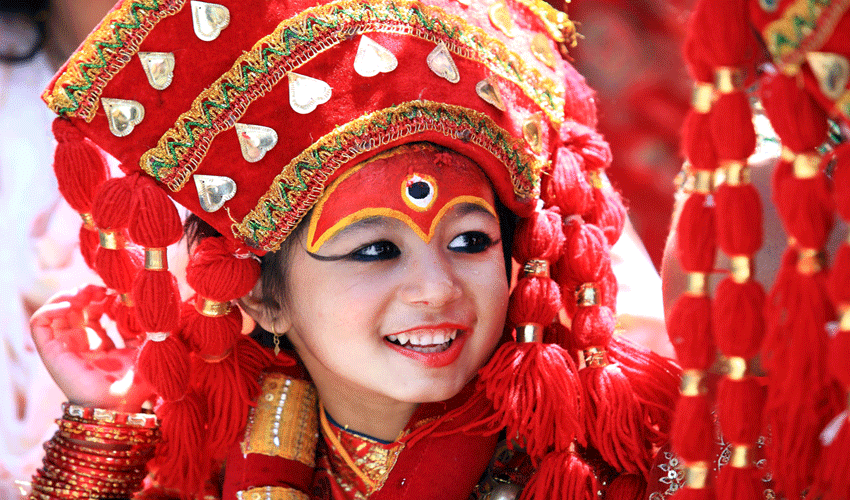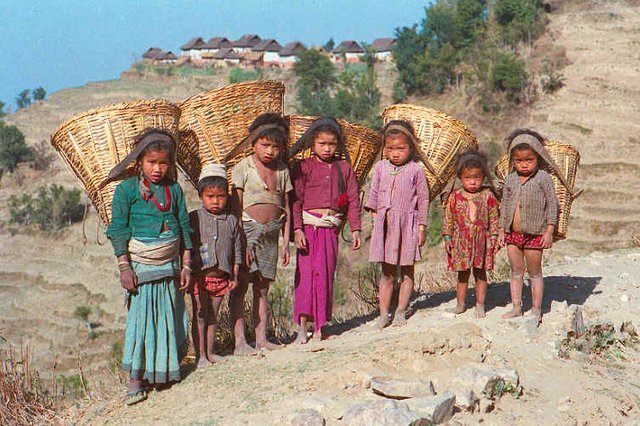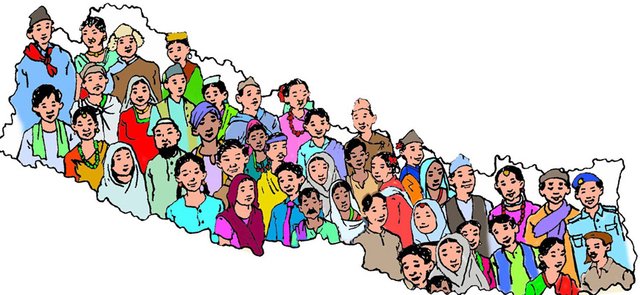Nepalese lifestyle and culture
Nepal Culture & Religion

Culture is embedded in the high peaks of Nepal, tradition flows with its rivers, art traverses through its valleys and religion lies in the heart of its people. Nepal, in short, is a country where art, culture and religion are a part of life of the inhabitants. People celebrate every moment with aroma, adding novelty to the traditions without affecting their essence.
Art of Nepal
The art and architecture of Nepal is deeply influenced by the religion. Unique craftsmanship can be found in temples, architecture, shrines, fountains and the design of religious objects. Art and religion is so deeply interlocked that it is impossible to separate the one from the other. All art forms express both Hindu and Buddhist iconography.
Buddhism in Nepal
Buddhism, the fourth largest religion all over the world, has strong roots in Nepal. Buddhism in Nepal dates from the birth of Siddhartha Gautama himself, therefore Buddhist influences are evident on the culture of Nepal. Nepal is the meeting point for Indian and Tibetan Buddhist traditions.
Culture of Nepal
The culture of Nepal is a assemblage of music, architecture, religion and literature. This mountain kingdom is multi-ethic and multi-lingual. The land is rich with unique cultural groups like Tharu,Yadav, Ahir, Newars and others.
Food of Nepal
Nepalese are great foodies and their food varieties are hot, spicy and nutritious. Newari and Thakali cuisines are the original taste of Nepal. Otherwise, Nepalese style of cooking has been influenced by Indian and Tibetan cooking. Dal Bhat tarkari is the staple food of Nepal. Meat curries and monos are the hot favorites among the tourists.
Music of Nepal
The rhythm, beats, bounce of Nepali traditional folk and classical music is spiritual enough to sooth you and entertaining enough to cheer you. Music is associated with every event in Nepal, then be it birth, marriage, festivals or national events.
People of Nepal
The people of Indo-Aryan community are the original inhabitants of Nepal. No wonder their descendents form the majority even now. Other major groups in Nepal are Gurungs and Magars who live mainly in the western region; Rais, Limbus and Sunwars who live in the eastern mid hills; Sherpas, Manangpas and Lopas who live near the mountains of Everest, Annapurna and Mustang respectively.
Religous Traditions and Festivals

Nepali villages are very close-knit communities. Everybody knows everybody else, their family, and their ancestors. Often the communities are interlinked by marriage too.
The mountainous terrain of Nepal and the lack of roads means that getting around takes time, and access to things like schools or hospitals is very difficult. It’s not uncommon for children to have to spend two hours walking to school, or for hospital to be a two day trek away.
As a result, Nepali villages are largely self-dependent. There is little evidence of the outside world – either very limited shops or none at all, no sign of the government, no police or health-workers. Many have no electricity and few have running water. If a Nepali wants something they normally have to do it themselves.
This separation has resulted in a diverse mass of ethnic groups, languages and cultural practices. Often one village’s practices are different from the next, even though they are only an hours walk apart.
Ranging from simple bare-boned wooden huts to multi-storey brick residences, teahouses provide much more than just tea. They are actually more like inns or guest houses providing bed, bath and sustenance, thus eliminating the need to carry much unwanted weight (such as camping gear or food supplies) on a traveller’s back.
If you add to that a guide and porter, like what our family of five did, you will have all the ingredients of a classic Nepal trek.
Teahouse trekking is not mountaineering in serious snow or ice. It does not demand any particular technical skill or equipment and is readily accessible to anyone with a sturdy pair of legs and a longing to see something different.

And so it was on a sunny day that we alighted from a bumpy van ride at Nayapul (elevation: 1,010m), a little town which is the starting point of many forays into the Annapurna region, west of the capital Kathmandu.
Religion of Nepal
Religion in Nepal is not only a system of social coherence based on certain rituals and beliefs, rather it is the binding force that ties the mountain kingdom together. Though Nepal is famous, as the world's only Hindu Kingdom, equal respect is given to other religions as well. Buddhism is the second largest religion followed in Nepal, others being Tantrism, Islam and Christianity.
